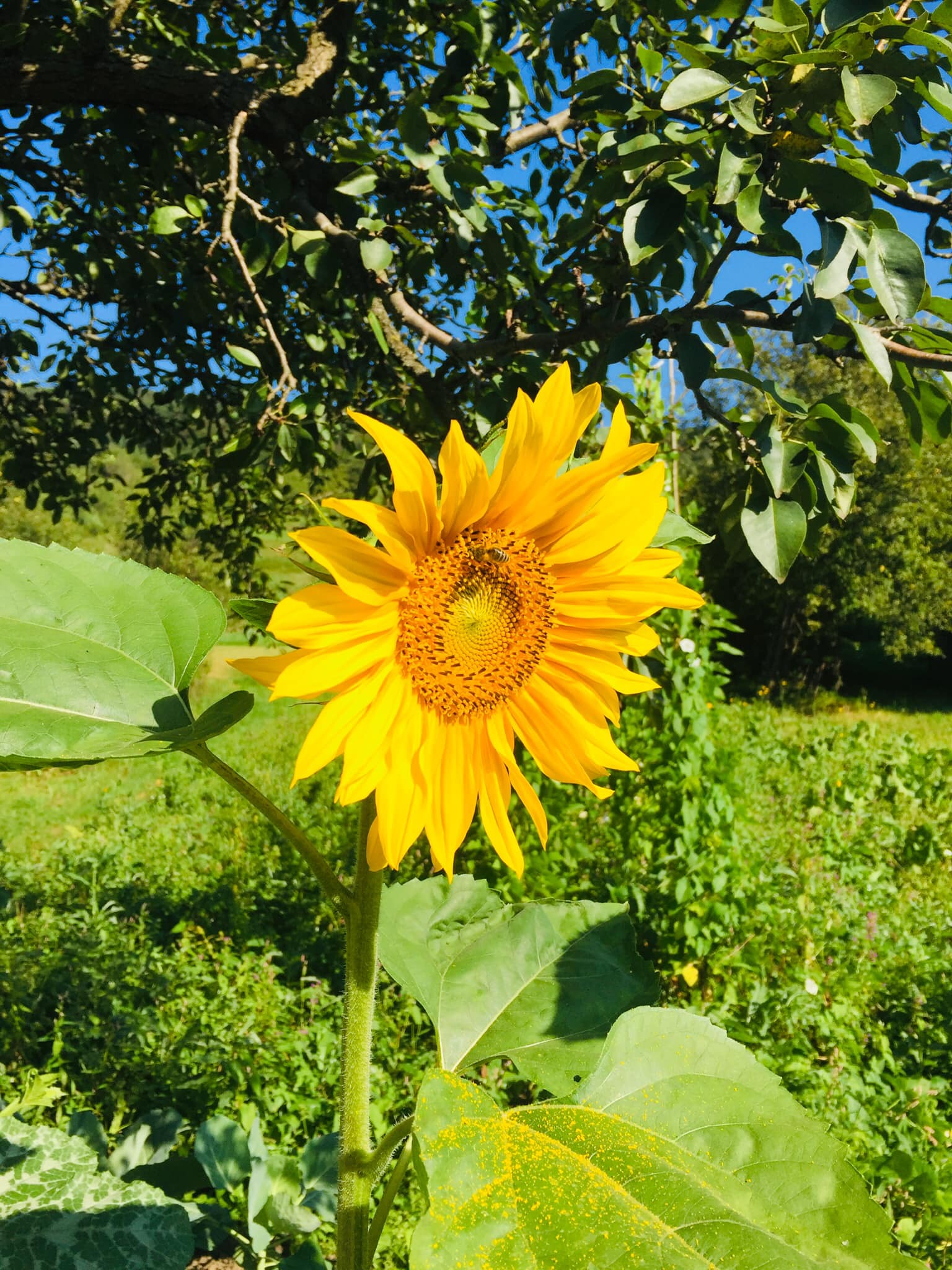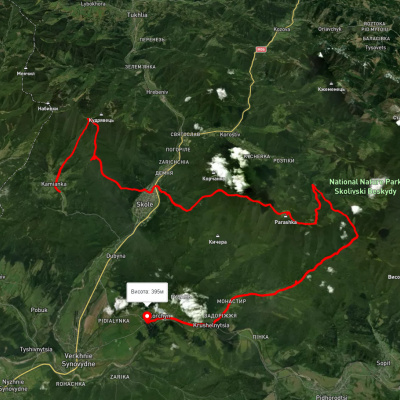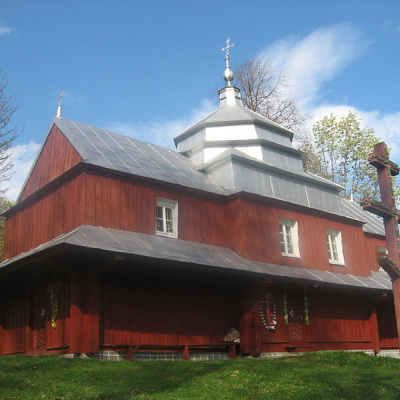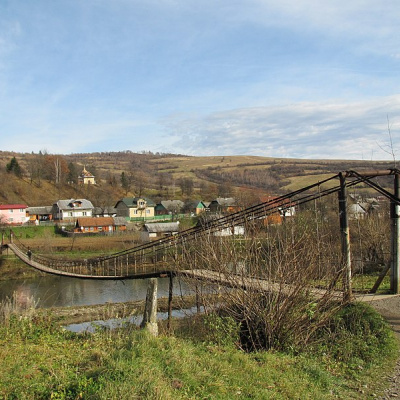Krushelnitsa
Krushelnytsia is a village in Ukraine, in the Skole district of the Lviv region. The population is 1297 people. The local self-government body is the Krushelnytsia village council.
The Stryi River and the small Brychka (Krushelnytsia) River flow through the village, where the small (1.5 m) Krushelnytskyi Waterfall of the same name is located. There is a suspension wooden bridge in the village, which is a passage to Zarichchia (a part of the village located on the right side of the Stryi River, at the entrance to the village). From the village there is a road to the Dil and Parashka mountains.

On October 4, 1395, Polish King Władysław Jagiełło granted Ivan and Demian the village of Krushelnytsia in Tustanivska parish. In 1556, King Sigismund II Augustus confirmed Jagiellonian privilege.
There are three churches in the village: the Church of St. Nicholas, the Church of the Holy Trinity (near which there is an old stone chapel built in the late 1700s), and the Church of the Blessed Virgin Mary. Church of the Blessed Virgin Mary. There is a memorial sign in the village in honor of Stepan Bandera's visit to the village with a group of 50 Lviv students in August 1933. The school building should also be considered an architectural heritage, as it was the estate of the Austrian governor.
It is known from the history of the region that in 1895-1896 they planned to build the Verkhne Syniovydne-Kropyvnyk-Turka-Sambir railroad along the Stryi River valley. However, these plans were never realized. Between 1895 and 1906, only the forest narrow-gauge Verkhnye Syniovydne-Krushelnytsia was laid along this route, later extended to Rybnyk with branches to Zubrytsia and Malmanstal.
This railroad existed until 1969. Narrow-gauge railways are described in detail in the book "Narrow-gauge Railways of the Skole Beskydy" by Andrii Bassarab, Mykhailo Hnatyshyn, and Ihor Chudiiovych. The narrow-gauge railroads were built mainly for the transportation of timber. However, in the 1930s, passenger traffic was introduced. This railroad line became one of the first small railroads in Europe to receive a license for tourist traffic. Currently, the Lviv Regional League of Intellectual Creativity is implementing the Carpathian Tram project to study narrow-gauge railways, preserve their remains as monuments of engineering history, and explore the possibilities of using local railways for tourism purposes.
Among the architectural monuments in the village are the Holy Trinity Church (1842) and the bell tower (XIX century).
For tourists, the monument to a horse by the road, near which there are figures of a Sich Rifleman and a girl, will be interesting places in the village. It is also worth visiting the suspension bridge over the Stryi River, from which you can admire the river itself against the backdrop of mountains.

Які туристичні (пішохідні) маршрути проходять через/біля Krushelnitsa?
Пропонуємо пройти такі туристичні (пішохідні) маршрути через/біля Krushelnitsa: с. Корчин, через вдсп. Гуркало, г. Парашка до с. Крушельниця, с. Кам'янка, через г. Лопата, м. Сколе, г. Парашка до с. Крушельниця, с. Корчин – вдсп. Гуркало, м. Сколе, через г. Парашка, вдсп. Гуркало, с. Корчин до м. Сколе, м. Сколе, через г. Парашка, вдсп. Гуркало, с. Корчин до с. Верхнє Синьовидне, м. Сколе, через г. Парашка, вдсп. Гуркало до с. Корчин







